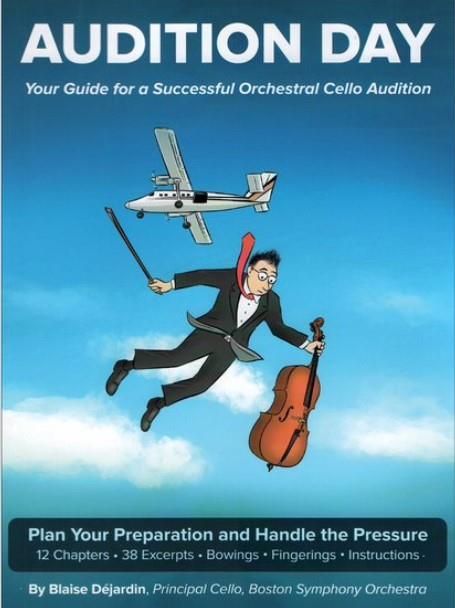Janet Banks reads a guide for budding orchestra members to secure their dream job, by Boston-based cellist Blaise Déjardin

Audition Day: Your Guide for a Successful Orchestral Cello Audition
Blaise Déjardin
111PP ISBN 9780578955698
Opus Cello $40
If you have been offered an audition for a cello position in a professional orchestra, Blaise Déjardin, a member of the Boston Symphony Orchestra since 2008 and its principal cello for the past five years, has created the perfect guide to achieving your goal.
In the first third of his book, Déjardin offers a world of advice about preparing for your audition, coping with nerves, keeping calm on the audition day itself and dealing with making mistakes. Part Two is a compilation of the 36 orchestral excerpts most commonly requested at auditions, printed alphabetically from Beethoven to Wagner. Interestingly there is nothing more recent than Ravel’s La Valse.
Déjardin is obviously a highly organised person who believes that thorough preparation over several months is key. From suggested daily practice plans and making multiple recordings of each excerpt, to how to organise your folder on the day, every detail is covered. He is also able to include fascinating insider knowledge on exactly what to expect on the day of the audition: playing behind a screen to avoid bias on the part of the panel; waiting to see if you have been selected for the next round; and only being allowed to ask the panel questions by proxy so as not to reveal your identity.
The orchestral excerpts make an invaluable collection for amateur orchestral cellists as well as those preparing for professional auditions. The book is spiral-bound so that it opens out easily on the music stand; each excerpt is on a right-hand page, printed at a clearly legible size with plenty of space between the staves for annotations, and with Déjardin’s advice on the opposite page.
He starts with Focal Points – the particular qualities that the panel is likely to be looking for, such as dynamics, legato and precision for the opening of Mozart’s Marriage of Figaro overture – and goes on to give detailed advice about what to work on when practising them, down to intensity of vibrato and how to play particular accents. Suggested bowings and fingerings are also included. Unfortunately not all the excerpts have bar numbers included, which makes for time-consuming bar counting when Déjardin refers to these. That aside, this is certainly a well-conceived and very user-friendly book.
JANET BANKS



































No comments yet